As we drive past a winding road flanked by dark green forests, a dark brown sign board announces – Trakoscan Castle – 2km. It’s a bright, warm Sunday, and we’ve braved several summer traffic jams to make our way to one of Croatia’s most well preserved castles.
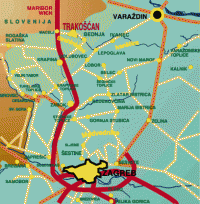 Trakoscan Castle is about an hour’s drive from Zagreb, the Croatian capital. It was built in the 13th century as part of the Zagorje principality defence fortification. Though not much is known about the early history of the castle, it has over time housed some of the most influential aristocratic families in the country. The last owners of the castle, the Draskovic family, also the most prominent, are responsible for the current features of Trakoscan. They accessorized, accentuated and built extensions to the then existing structure, making it a worthy aristocratic abode. Today the castle is owned and maintained by the State; in 1953 it was converted into a museum, and opened to the public.
Trakoscan Castle is about an hour’s drive from Zagreb, the Croatian capital. It was built in the 13th century as part of the Zagorje principality defence fortification. Though not much is known about the early history of the castle, it has over time housed some of the most influential aristocratic families in the country. The last owners of the castle, the Draskovic family, also the most prominent, are responsible for the current features of Trakoscan. They accessorized, accentuated and built extensions to the then existing structure, making it a worthy aristocratic abode. Today the castle is owned and maintained by the State; in 1953 it was converted into a museum, and opened to the public.
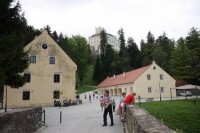 Entering the castle premise, past the makeshift souvenir stalls and the customary café, we make our way along the winding gravel path that leads up to the castle gates. From the top, Trakoscan’s yellow-white façade towers over a lush, green estate. Below, you can trace the ribbon-like road approaching the estate; the densely wooded park that surrounds the castle; the large artificial lake with ducks bobbing about; the small white-washed church; and the many criss-crossing walking trails around the property.
Entering the castle premise, past the makeshift souvenir stalls and the customary café, we make our way along the winding gravel path that leads up to the castle gates. From the top, Trakoscan’s yellow-white façade towers over a lush, green estate. Below, you can trace the ribbon-like road approaching the estate; the densely wooded park that surrounds the castle; the large artificial lake with ducks bobbing about; the small white-washed church; and the many criss-crossing walking trails around the property.
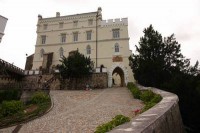 A small entrance fee allows us access into the castle. Unfortunately, photography within the castle is prohibited. Walking in, I’m immediately struck by how cosy and authentic the set up is, like the family is still in residence. The items on display date from the 15th-19th centuries and are arranged in the exact order as when they were in use.
A small entrance fee allows us access into the castle. Unfortunately, photography within the castle is prohibited. Walking in, I’m immediately struck by how cosy and authentic the set up is, like the family is still in residence. The items on display date from the 15th-19th centuries and are arranged in the exact order as when they were in use.
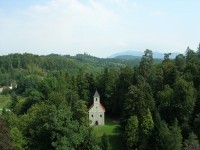 Past a small courtyard with a covered well, we enter a fully functional kitchen with a traditional oven and stove. The kitchen cabinets are still lined, and the counters are sparkling clean. Equally fascinating are the dining and entertaining halls. They are lavish and still wear a hint of aristocratic arrogance.
Past a small courtyard with a covered well, we enter a fully functional kitchen with a traditional oven and stove. The kitchen cabinets are still lined, and the counters are sparkling clean. Equally fascinating are the dining and entertaining halls. They are lavish and still wear a hint of aristocratic arrogance.
The most fascinating room in the castle, however, is the Knights Room, with its collection of weaponry from the 15th-19th century. Walking past the displays one can trace their development from crude arms to more sophisticated weapons. From there on we cover the bedrooms, the music parlour with a piano still standing quietly in the corner, and a hunting room with heads of animals looking down at us. We continue right up to the study which contains art work by Julijana Erdödy, one of the first established female artists in Croatia.
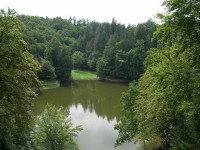 Each room holds priceless antique furniture and all rooms are adorned with personal items like family portraits, bibles and memorabilia. In every room, you can picture the time when it was more than just a part of a museum. Instead, you can clearly trace the lives and the routine that unfolded within these rooms.
Each room holds priceless antique furniture and all rooms are adorned with personal items like family portraits, bibles and memorabilia. In every room, you can picture the time when it was more than just a part of a museum. Instead, you can clearly trace the lives and the routine that unfolded within these rooms.
As we come to the end of the tour, we follow the exit sign and walk out of the last door, this one too wears an elaborate coat-of-arms on top. A series of wooden stairs leads us away. We walk down towards the lake, following the fading footsteps of aristocracy.


Comments